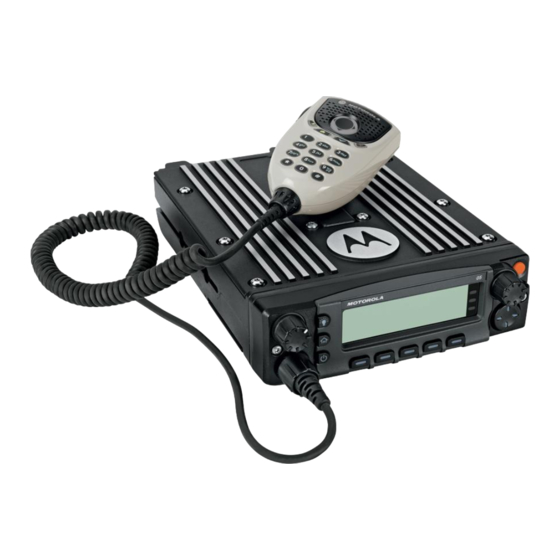
Summarization of Contents
RADIO PARTS AND CONTROLS
05 Control Head
Identifies the main components and controls of the O5 Control Head unit.
PREPARING YOUR RADIO FOR USE
Turning on/off the Radio
Instructions on how to power the radio on and off, including troubleshooting.
Adjusting the Volume
Explains how to increase or decrease the radio's audio volume using the Volume Knob.
IDENTIFYING RADIO CONTROLS
Keypad and Function Buttons
Details controls like Emergency, Phone, Talkgroup, Scan, and other programmable buttons.
Navigation and System Controls
Explains controls for Zone, Scan List, Site, and system status navigation.
Assignable Settings and Utility Functions
Covers controls for Dimmer, TX Power Level, and Voice Announcement features.
Accessing Preprogrammed Functions
Explains how to access radio functions via programmable buttons or menu select buttons.
Using Advance Programmable Buttons
Details using programmable buttons for quick access to common radio features.
Using Navigation Buttons
Describes the operation of Home, Dimmer, Volume, Mode, and 4-Way Navigation buttons.
IDENTIFYING STATUS INDICATORS
Basic Operational Status Icons
Explains icons for Receiving, Transmitting, Signal Strength, and Direct/Repeater modes.
Advanced Feature Status Icons
Covers icons for Monitor, In-Call Alert, Power Level, Scan, and Priority Scan.
Security, Location, and Data Icons
Details icons for Secure Operation, AES, Location, User Login, and Data Activity.
Text Entry and Messaging Icons
Explains indicators for text modes and TMS features like Inbox status and message flags.
LED Indicator Meanings
Explains the operational status indicated by different LED colors and patterns.
Intelligent Lighting Indicator Functions
Details dynamic backlight and alert colors for signaling radio events.
ALERT TONES
Low-Pitched Alert Tones
Lists alert tones heard as short, long, low-pitched sounds and their associated conditions.
Medium-Pitched and Grouped Tones
Describes alert tones heard as medium-pitched or grouped sounds and their conditions.
Ringing and Chirp Alert Tones
Covers alert tones heard as ringing, gurgling, or chirping sounds and their conditions.
GENERAL RADIO OPERATION
Selecting a Zone and Channel
Explains procedures for selecting zones and individual radio channels.
Making Radio Calls
Outlines methods for initiating radio calls, including talkgroup calls.
ADVANCED FEATURES
Multiple Control Head and Intercom Features
Describes controlling multiple heads and using the intercom function between them.
Scan List Management
Covers creating, viewing, editing, and managing scan lists and priority status.
Scan Operation
Explains how to turn scan on/off, transmit while scanning, and manage nuisance channels.
Emergency Operation Modes
Details different emergency modes like alarm, call, and special considerations.
Trunking System Operations
Covers fail-soft mode, out-of-range conditions, and trunked announcement capabilities.
Ignition Switch and Power Management
Explains how ignition state affects radio functionality and power management options.
Voice Announcement Feature
Describes the radio's ability to audibly announce feature modes, zones, or channels.
UTILITIES
Radio Profile Selection
Allows manual switching of visual and audio settings via preprogrammed radio profiles.
Display Backlight Control
Explains how to enable, disable, or adjust the radio's display backlight brightness.
Time-Out Timer and PTT ID
Covers transmission duration limits and the digital PTT ID feature.









Need help?
Do you have a question about the O5 and is the answer not in the manual?
Questions and answers